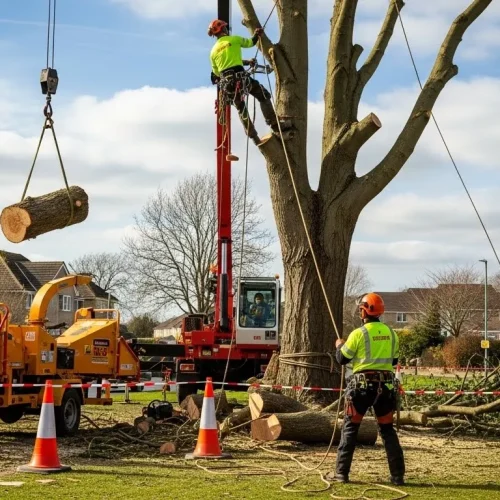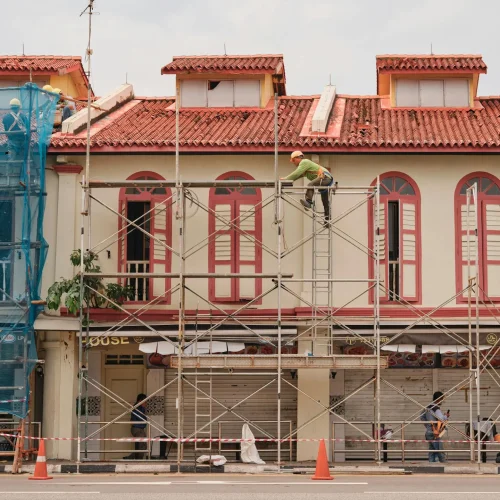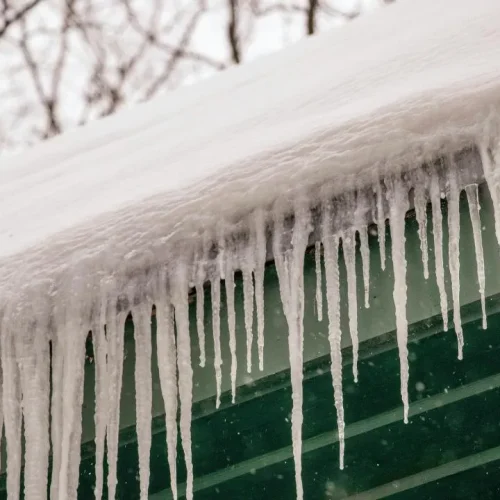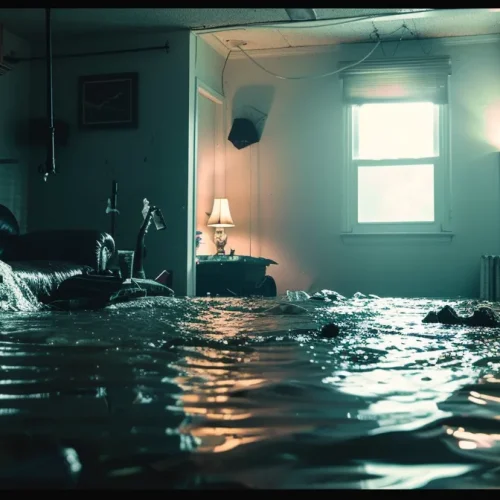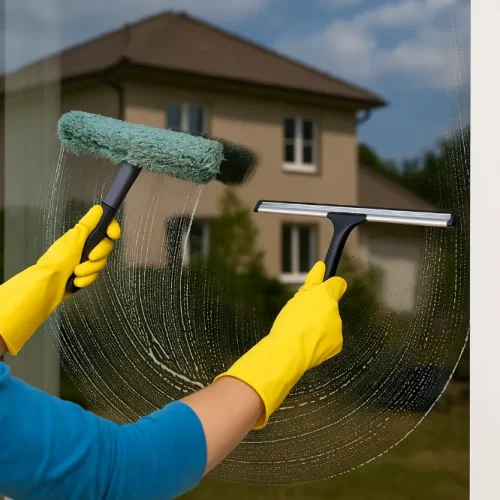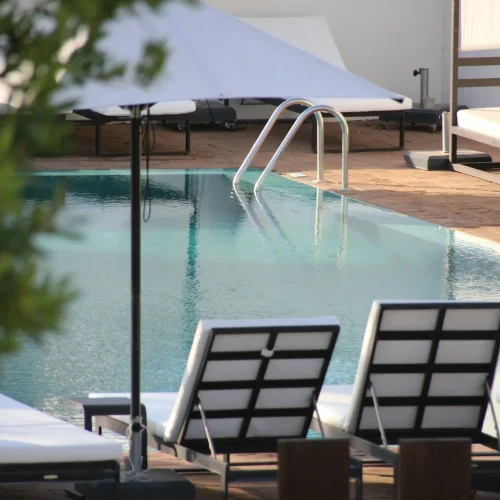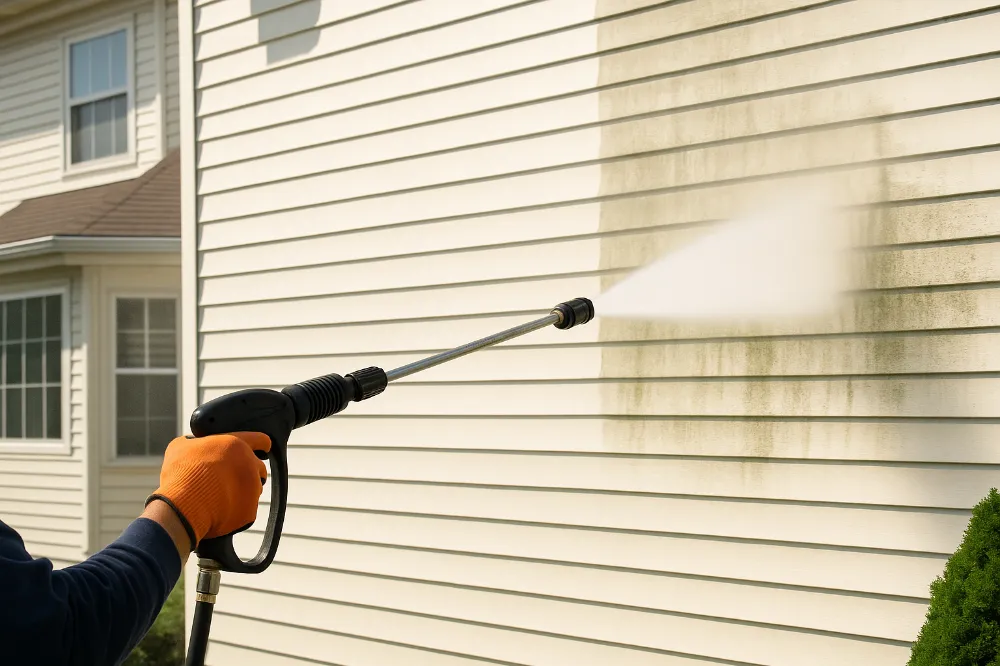
If you’ve ever wondered when it’s the best time to pressure wash your home, you’re not alone. While many homeowners know the importance of keeping siding, driveways, decks, and patios clean, far fewer realize that timing is just as important as technique. The season you choose can impact the effectiveness of your cleaning, how long your results last, and even the longevity of your home’s exterior surfaces. When you pressure wash your home at the right time, you’ll not only boost curb appeal but also prevent long-term damage caused by mold, mildew, and grime buildup. Whether you DIY or hire a professional, knowing when to schedule your pressure wash your home project could save you money, effort, and repairs down the line.
We’ll cover exactly why timing matters, break down the pros and cons of each season, explore regional factors, and provide actionable tips so you can plan your next home pressure washing services from Hero Powerwash & Striping with confidence.
Why Timing Matters for Pressure Washing
Timing affects more than just convenience—it influences results.
Key reasons timing matters when you pressure wash your home:
- Weather Impact: Extreme heat can cause streaks; freezing temps can create dangerous ice.
- Buildup Cycles: Mold, algae, and pollen accumulate at certain times of year.
- Surface Protection: Certain materials expand and contract with seasonal changes, which can affect cleaning.
- Safety & Efficiency: Moderate temperatures help ensure the cleaning is thorough and drying is quick.
Cleaning your home’s exterior isn’t just about appearances—it’s a protective maintenance step. By planning the best season to pressure wash your home, you can prevent damage like:
- Wood rot from trapped moisture
- Staining from leaf tannins
- Cracking in concrete from dirt and debris in freeze-thaw cycles
Best Seasons for Pressure Washing Your Home
Spring – Post-Winter Refresh
For many homeowners, spring is the most popular time to pressure wash your home.
Why spring works well:
- Removes winter grime: Road salt, sand, and de-icing chemicals can cling to siding and driveways.
- Mildew & mold cleanup: Moisture from snowmelt often leads to early growth of mildew and algae.
- Painting prep: If you plan to repaint or stain, spring cleaning provides a clean surface for better adhesion.
- Allergy control: Washing away pollen and dust can reduce triggers for seasonal allergies.
Summer – Long Days, Quick Drying
Summer offers long daylight hours and warm temperatures—ideal for drying after a deep clean.
Advantages of summer cleaning:
- Quick drying times reduce the chance of water damage.
- Ideal for high-use outdoor areas: patios, decks, and pool surrounds.
- Longer days allow for flexible scheduling.
Cautions:
- Avoid washing in peak midday heat—it can cause water to evaporate too quickly, leaving streaks.
- High humidity in certain regions can make drying slower than expected.
Fall – Pre-Winter Protection
Fall is an often-overlooked but critical time to pressure wash your home.
Why fall is a smart choice:
- Removes organic buildup: Leaves, acorns, and pine needles can stain and damage surfaces.
- Prepares your home for winter moisture: Clean gutters and siding are less likely to trap water and ice.
- Reduces risk of mildew growth during winter dormancy.
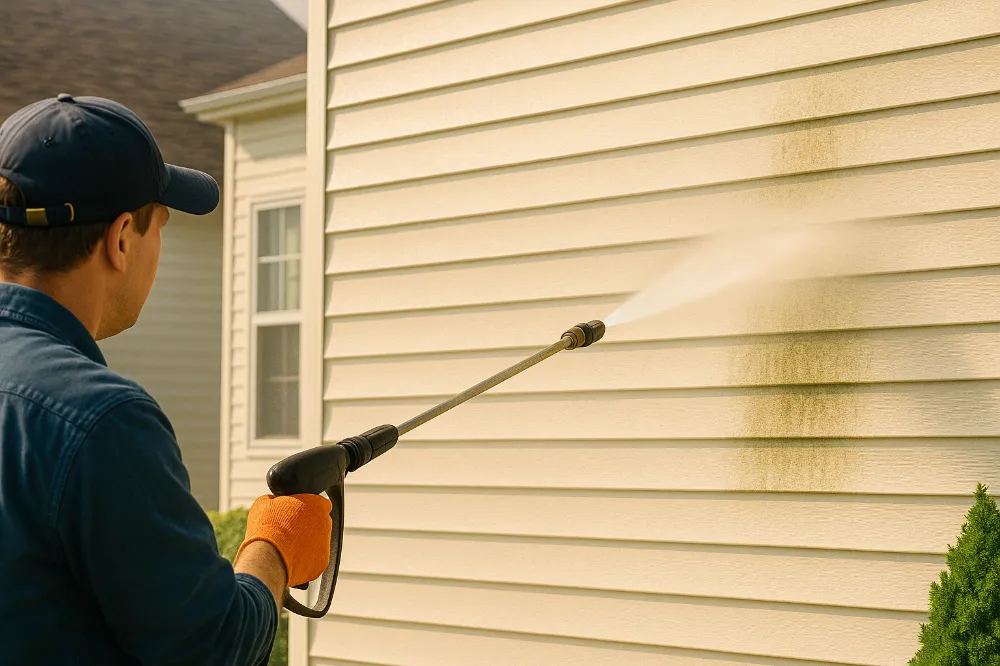
When NOT to Pressure Wash
There are times when pressure washing can be ineffective or even damaging.
Avoid pressure washing when:
- Temperatures are below freezing: Water can freeze, expand, and damage surfaces.
- Heavy pollen season: If allergies are severe, cleaning too early may be undone quickly.
- Before storms: Wind and rain can deposit dirt and debris immediately after cleaning.
Climate Considerations by Region
The ideal time to Pressure Wash Your Home can vary based on where you live.
| Region | Challenges | Best Time to Wash |
|---|---|---|
| Humid/Southeast | Mold & algae grow year-round | Twice a year: spring & fall |
| Arid/Southwest | Dust buildup more than mold | Spring or after windy seasons |
| Coastal | Salt spray corrodes surfaces | Late spring or early fall |
| Northern/Cold Climates | Salt, snow, freeze-thaw damage | Late spring or early summer |
Additional Tips for Choosing the Right Time
- Look for mild weather windows: Several dry, 50–80°F days in a row are ideal.
- Coordinate with landscaping: Avoid washing right after planting or mulching.
- Consider professional discounts: Many companies offer seasonal specials.
- Plan ahead: Booking with a professional like those offering services or local providers that can ensure you get your preferred time slot.
DIY vs. Professional Pressure Washing
While you can pressure wash your home yourself, hiring professionals has benefits:
- Expertise with different surfaces (wood, vinyl, brick, concrete)
- Access to commercial-grade equipment and eco-friendly detergents
- Reduced risk of surface damage or injury
When to DIY:
- Small, manageable areas (deck, patio)
- You already own the equipment
- You’re comfortable handling high-pressure tools
When to hire a pro:
- Multi-story homes
- Extensive mold or mildew issues
- Prepping for paint or staining
Maintenance Schedule: How Often Should You Pressure Wash Your Home?
Most homes benefit from pressure washing at least once a year, but certain factors can increase the frequency.
Frequency Guidelines:
- Annual: Average suburban home in mild climate.
- Biannual: Humid climates or heavy tree coverage.
- As needed: After storms, major landscaping, or construction work.
Conclusion
The best time to pressure wash your home depends on your climate, home materials, and seasonal conditions. Spring is great for post-winter cleanup, summer offers fast drying, and fall prepares your home for winter. Avoid extreme weather conditions and plan for mild, dry days for the best results. Whether you DIY or hire a pro for pressure washing, timing is the key to longer-lasting results, better curb appeal, and protecting your investment.
If you want lasting results and a stress-free experience, consider hiring professionals who specialize in quality services from Hero or companies like Powerwash & Striping that can handle every detail from prep to finish.
FAQs
The best times are spring, summer, or fall, depending on your climate and goals. Each season offers unique benefits for cleaning and surface protection.
It’s not recommended to pressure wash in freezing temperatures because water can freeze, expand, and damage surfaces. Wait for mild, dry weather instead.
Most homes benefit from an annual cleaning. In humid or coastal climates, twice a year is ideal to prevent mold, mildew, and salt damage.
Always pressure wash before painting to remove dirt, mold, and peeling paint. This ensures the new paint adheres properly and lasts longer.
Yes, small areas like patios or decks can be DIY projects if you have the right equipment and skill. For multi-story homes or heavy buildup, hire a professional.
Weather, humidity, and seasonal debris cycles all influence the best time. You should also consider your region’s climate and local environmental conditions.
Yes, it can remove pollen, dust, and mold from exterior surfaces, reducing common allergy triggers. Spring cleaning is especially effective for this.





